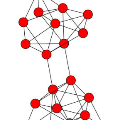Network embedding is aimed at mapping nodes in a network into low-dimensional vector representations. Graph Neural Networks (GNNs) have received widespread attention and lead to state-of-the-art performance in learning node representations. However, most GNNs only work in unsigned networks, where only positive links exist. It is not trivial to transfer these models to signed directed networks, which are widely observed in the real world yet less studied. In this paper, we first review two fundamental sociological theories (i.e., status theory and balance theory) and conduct empirical studies on real-world datasets to analyze the social mechanism in signed directed networks. Guided by related sociological theories, we propose a novel Signed Directed Graph Neural Networks model named SDGNN to learn node embeddings for signed directed networks. The proposed model simultaneously reconstructs link signs, link directions, and signed directed triangles. We validate our model's effectiveness on five real-world datasets, which are commonly used as the benchmark for signed network embedding. Experiments demonstrate the proposed model outperforms existing models, including feature-based methods, network embedding methods, and several GNN methods.
翻译:网络嵌入旨在将网络中的节点映射到低维向量表示。图神经网络(GNNs)受到了广泛关注,并在学习节点表示方面实现了最新技术。然而,大多数GNN仅适用于无符号网络,而仅存在正链接。将这些模型转移到有向有符号网络(在现实世界中广泛观察但不常被研究)并不容易。在本文中,我们首先回顾了两个基本的社会学理论(即状态理论和平衡理论),并在真实世界数据集上进行实证研究以分析有向有符号网络中的社会机制。在相关的社会学理论指导下,我们提出了一种名为SDGNN的新型有向有符号图神经网络模型,用于学习有向有符号网络中的节点嵌入。所提出的模型同时重构链接符号、链接方向和有向有符号三角形。我们验证了我们模型在五个真实数据集上的有效性,这些数据集通常用作有符号网络嵌入的基准。实验证明,所提出的模型优于现有模型,包括基于特征的方法、网络嵌入方法和几种GNN方法。




